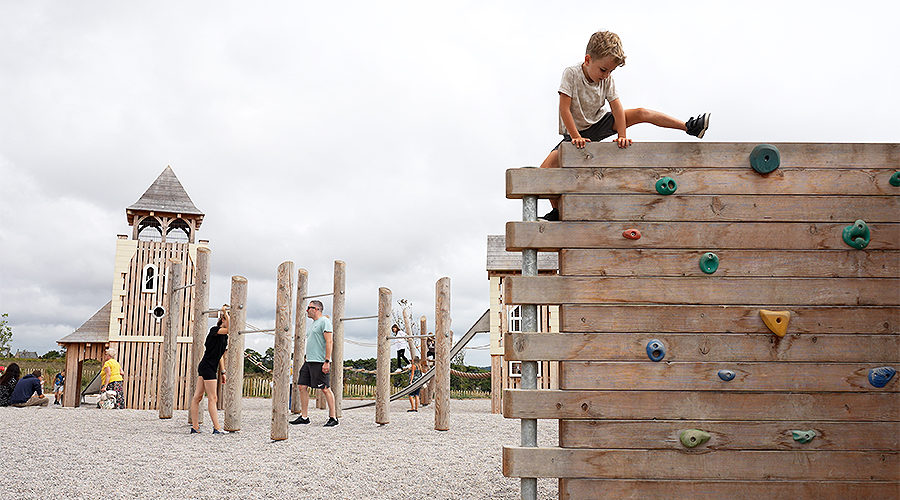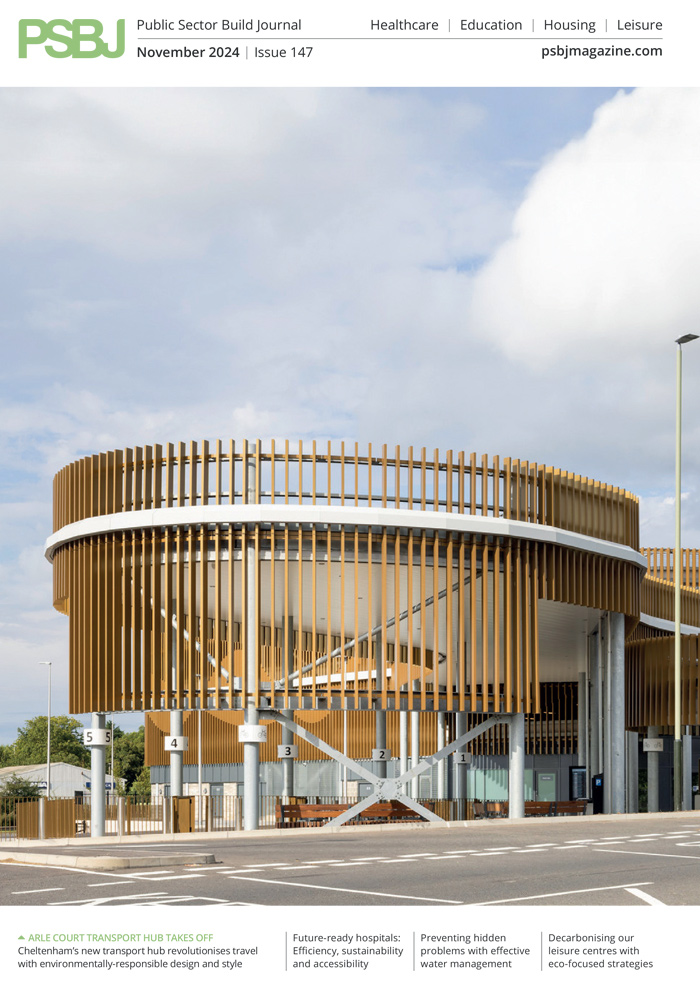Designers often have lots of questions when it comes to NEAP, LEAP and LAP playgrounds; it can often be confusing to understand the requirements, or the guidance can be interpreted in different ways. In this article, Timberplay breaks down their characteristics.
Timberplay
The ambiguity surrounding NEAP, LEAP and LAP playgrounds can sometimes cause issues when designers feel the need to use certain pieces or quantities of equipment to fulfil the design brief. However, it is crucial to recognise that actually the requirements should be used for inspiration; after all, they were created to make life and play better for everyone.
The history of this stems from the lack of access to local play opportunities in many areas – this brought the concept of LAPs, LEAPs and NEAPs to life – and they were introduced under ‘The Six Acre Standard’ in 1992, later reinforced in 2001’s Fields In Trust document. The overall aim is to have six acres of recreational space for every 1000 people when developing a new housing estate within a reasonable walking distance.
Informal play opportunities – Local Area for Play (LAP)
A LAP is a space that should focus primarily on the development of younger children during the first phases of their outdoor play journey. These play areas are more common, usually a one-minute walk away from houses, and the budget tends to be lower. Therefore, designs have to be carefully put together to suit the budget whilst still allowing for a play space that will encourage skill development and social interaction.
These spaces are now also known as Doorstep Play, Play Along the Way or Playful Landscapes and do not necessarily require physical play equipment. They should be landscape led and provide informal play opportunities. This can take form in several different ways from fallen logs, stepping logs and boulders to playful pathways and routes.
When designing these spaces, it is important to place yourself in the child’s position and think about how the experiences would feel from their eye level. Activities close to the ground, or low level, can be more welcoming for young children and encourage them to explore.
Planting areas are ideal within LAPs; they encourage natural and social play between children whilst also providing sensory opportunities as children experience their feel and smell. They also promote educational development as children recognise seasonal changes that happen around them.
Independent play experiences – Local Equipped Area for Play (LEAPs)
LEAPs are local play spaces aimed at children that are beginning to play independently and unaided. These playgrounds often feature interactive elements, such as sand and water play, and musical elements that are built to nurture children’s curiosity and creativity.
In size, LEAPs tend to be around four times larger than LAPS, allowing for sufficient space to offer plenty of play value and roaming areas. It is often mentioned that these areas should have at least five play functions – this is sometimes confused with the need for five pieces of equipment. Actually, these five functions could be spread across less equipment, but equipment that is more diverse and offers higher play value.
These spaces must also ensure some provision for younger children and supervised play opportunities. They are the perfect facility for children to test their abilities with more physically challenging equipment that will teach them how to fall and pick themselves back up again.
Specifying equipment that has the opportunity for graduated challenge and risk means that it can be multi-functional but also sociable for children who may develop at different speeds than their peers. Designing open space into a LEAP is a great opportunity to promote free play and breathing space for children to play traditional playground games together, such as tag.
Physically challenging play – Neighbourhood Equipped Areas of Play (NEAP)
NEAPs primarily focus on older children and are typically more challenging and adventurous, with larger play structures and height. However, consideration within these spaces should still be taken for the integration of younger children and parents, allowing families to play as one, no matter of age or ability.
These larger play spaces are less common than the previous two types, usually being around 15 minutes walk from the child’s home. Play in a NEAP should offer physical development and challenges for children to test their limits and boundaries. However, they can also be designed to create a great social hub for teenagers to meet with their friends, sit on swings and lay on roundabouts in a space where they are comfortable within. At around 1000m2, a NEAP should provide the opportunity for free space to play ball games, as well as to use equipment and sit and socialise.
Gender inclusivity is one design consideration that should be carefully considered. NEAPs will generally include provision for at least 465m2 of either wheeled sport, such as a skate park, or team sports, such as a multi-use games area. These are great in such spaces as they promote physical activity and social space for teens to enjoy.
However, these are typically used predominantly by boys and can be unwelcoming for girls. Given this, consideration should be taken for how these spaces can be modified so that they also attract the use of girls, rather than them feeling excluded, perhaps adding extra seating, shelters or even group swings for them to use.
Within all of these spaces, it is essential to design for parents/guardians too. Children should have the chance to feel independent, whilst the adult has a spot to feel comfortable and be able to see across the play space. Accessibility should always be at the forefront of all designs. It is vital to remember that disabilities come in many forms, and there are a variety of different requirements needed, from sensory and quiet spaces for neurodivergent users to playful pathways and accessible routes for wheelchair users.
Globally, sustainability is at the forefront of conversation too, and the values of sustainability should be considered within any play design. Careful consideration of the specified materials can benefit both the environment and the child. Natural materials are tactile and create informal opportunities for children to experiment with their senses and connect to nature while being more environmentally friendly. A more natural and loose-fill safety surface, such as sand or bark, is not only more sustainable in comparison to rubber alternatives but also create play opportunities for children to throw, feel and move.
FOOTNOTE:
This article has been written from over 20 years of Timberplay’s experience in designing play spaces; however, we would always recommend that you refer to Fields In Trust’s ‘planning and design for outdoor play’ document for further guidance.










